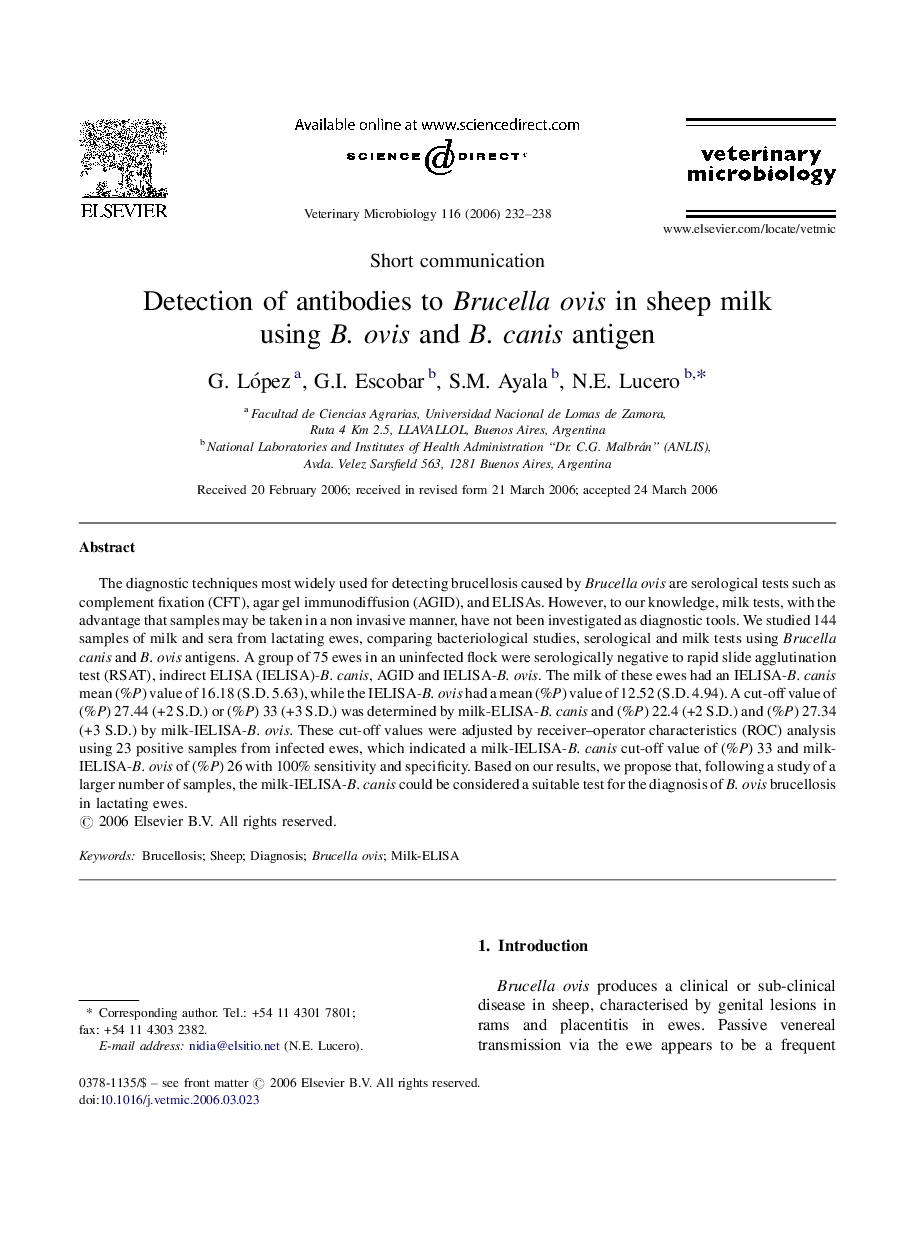| Article ID | Journal | Published Year | Pages | File Type |
|---|---|---|---|---|
| 2469462 | Veterinary Microbiology | 2006 | 7 Pages |
The diagnostic techniques most widely used for detecting brucellosis caused by Brucella ovis are serological tests such as complement fixation (CFT), agar gel immunodiffusion (AGID), and ELISAs. However, to our knowledge, milk tests, with the advantage that samples may be taken in a non invasive manner, have not been investigated as diagnostic tools. We studied 144 samples of milk and sera from lactating ewes, comparing bacteriological studies, serological and milk tests using Brucella canis and B. ovis antigens. A group of 75 ewes in an uninfected flock were serologically negative to rapid slide agglutination test (RSAT), indirect ELISA (IELISA)-B. canis, AGID and IELISA-B. ovis. The milk of these ewes had an IELISA-B. canis mean (%P) value of 16.18 (S.D. 5.63), while the IELISA-B. ovis had a mean (%P) value of 12.52 (S.D. 4.94). A cut-off value of (%P) 27.44 (+2 S.D.) or (%P) 33 (+3 S.D.) was determined by milk-ELISA-B. canis and (%P) 22.4 (+2 S.D.) and (%P) 27.34 (+3 S.D.) by milk-IELISA-B. ovis. These cut-off values were adjusted by receiver–operator characteristics (ROC) analysis using 23 positive samples from infected ewes, which indicated a milk-IELISA-B. canis cut-off value of (%P) 33 and milk-IELISA-B. ovis of (%P) 26 with 100% sensitivity and specificity. Based on our results, we propose that, following a study of a larger number of samples, the milk-IELISA-B. canis could be considered a suitable test for the diagnosis of B. ovis brucellosis in lactating ewes.
